GLO BAL THINKERS

DIGITAL PROjEcT
ANDALUcíA sample
SCIENCE 2 PRIMARY
Learning experience. A picture of a bulb full of sports equipment invites pupils to invent a sport everybody can play.
Target in action. Invent a sport boys and girls can play together.
Learning experience. A bike made out of fuit and vegetables introduces the importance of healthy habits.
Target in action. Design a Healthy Day poster for your school.


Learning experience. A figure in a wheelchair introduces the importance of making cities accesible.
Target in action. Think of ideas to help people in wheelchairs in your locality.
Learning experience. A gardener in a park presents the importance of all jobs.
Target in action. Choose your favourite job and complete a factfile.

Learning experience. A boy helping marine animals shows how important it is to respect marine animals. Target in action. Make a mural on ways to protect marine animals.

Learning experience. Some animals and plants invite us to protect living things.
Target in action. Design a wall display about the living things in your local area.
Learning experience. A map and a compass introduce the different ways to find our way around.
Target in action. Draw a picture of your school and the position of the Sun.
Learning experience. A boy and a girl collecting rubbish help us reflect on how to take care of landscapes. Target in action. Brainstorm ideas to take care of landscapes around you.
Learning experience. A picture of the Earth melting introduces the importance of taking care of our planet.
Target in action. Make a poster to raise awareness about climate change.
Learning experience. A robotic frog introduces the idea of creating a project.
Target in action. Create a timeline for a project to promote sustainable technology.


Learning experience. A group of boys and girls swimming introduce the importance of water.
Target in action. Brainstorm the importance of water for our health.
Learning experience. An image full of clocks helps us to understand the importance of time.
Target in action. Give some ideas about the importance of using a school planner.






PAGE LEARNING EXPERIENCE TAKE ACTION SDG 8 1 OUR bOdY 22 2 cArInG FOR yOUR bOdY 36 3 YOUr lOcAlItY 50 Gender equality Good health and well-being Sustainable cities and communities Peace, justice and strong institutions Life below water Life on land Life on land Sustainable cities and communities Climate action Sustainable cities and communities Good health ahd well-being Quality education 4 WhAt jOb dO yOU lIkE? 68 5 I lOvE ANImAlS 82 6 LOOkInG AFtEr nAtUrE 96 7 WhErE ARE yOU? 134 9 CLEANING OUR PLANET! 150 10 AlL AbOUt tEcHnOlOgY 166 11 WATER AnD WEAtHER 182 204 12 MAKE THE MOST OF YOUR TIME! 112 8 I lIkE tHIs lAnDsCAPE what
INTERDISCIPLINARY
1
are we goIng to learn?
TERM REVIEW
TERM REVIEW 2 TERM REVIEW 3
• Our body
• Changes in our body
• Nutrition: respiration and digestion
• Health and illness
• Food
• Eating well
• Your locality
• Your municipality
KNOW HOW TO: LEARN, APPLY AND RESEARCH
• Nutrition: circulation and excretion
• Interaction: senses, the brain and nerves
• The locomotor system
• Good hygiene
• Doing exercise and resting
• Expressing emotions
• Municipal services
• Municipal organisation
• Let’s go to a festival
Competence-based activities. This is my family. What are the stages in digestion? Taking your pulse.
Competence-based activities. Emergency situations. Food labels. Move your body! Can you identify emotions?
Competence-based activities. Work in the town hall for a day! Elections in our classroom.
• Nature is rich
• Making produtcs
• Providing services
Competence-based activities. Delicious jam!
INTERDISCIPLINARY PROJECT · A picture is worth a thousand... Go shopping in your local shops!
• There are many living things
• Mammals
• Birds
• The interaction function in plants
• The nutrition function in plants
• The reproduction function in plants
• Using plants for orientation
• Ways to find your way around
• The Earth
• Elements of a landscape
• Mountain landscapes
• Plain landscapes
• Reptiles
• Amphibians
• Fish
• Invertebrate animals
• Living things and ecosystems
• Our interaction with the environment
• Taking care of our environment
• The solar system
• Rotation and revolution
• Coastal landscapes
• Taking care of our landscapes
Competence-based activities. Hands on feathers. Frogs grow up.
Competence-based activities. Look at that leaf! Plants make their own food! Growing our own plant. Does it come from a plant? What if...
Competence-based activities. Getting around my locality. Your own solar system.
Competence-based activities. Plain landscapes in Andalucía. Making my own piggy bank.
INTERDISCIPLINARY PROJECT · Commit to birds: Food and drink for birds
• Matter: mass and volume
• Using matter
• Matter changes
• Everyday technology
• Information and Communication Technologies (ICT)
• Projects help us
• Water in nature
• Taking care of water
• Atmospheric phenomena
• Yesterday, today and tomorrow
• Daily life activities
• Checking my calendar
• Energy and energy sources
• Taking care of our planet
• My first project: building
• My second project: programming
• The weather
• Environmental problems in Andalucía
Competence-based activities. Experimenting with matter. What is water like in nature? Take action for the planet.
Competence-based activities. Internet research. Solving problems. Building a machine. Creating a computer program.
Competence-based activities. Water cycle in my bottle. The weather forecast. Helping our environment.
• Learning form the past
• Protagonists
Competence-based activities. My solidarity calendar. Learning from our elders. I’m a famous inventor.
INTERDISCIPLINARY PROJECT · TIC-TAC Smile!: Investigating the past GLOSSARY
caring for your body


I eat healthy food and do sports. I care for my body!
WHAT do You tHInK?
what Is goIng on around you?
Do you eat healthy food every day? Many people haven’t got healthy habits.


WHAT cAn you do To HElp?
Design a Healthy Day poster for your school. tAKE ACtIon

22
2
3






23 what do you nEed To knoW To TAkE aCTIon? Let’s starT! sIng The song HAvE you goT HEaLThy HAbITs? Health and illness 1 do You Eat WeLl? Eating well 3 do you do exercIsE and rEst wElL? Doing exercise and resting 5 WHAT types oF Food do You Eat? 2 Food HAvE you goT good HYgIene? 4 Good hygiene hoW do You EXprEss EMoTIons? 6 Expressing emotions
1 Circle the healthy habits.

2 Look, listen and read.
Healthy habits


A healthy person’s body works well.
good hygiene


a healthy diet
doing exercise
going to the doctor sleeping and resting



Illness


preventing accidents

An ill person’s body doesn’t work well.

24 hAVE
1
You got hEALthY hABIts?
Health and illness
t HINK
fever common cold cough 1 2 3
3 Cross the odd one out.
1 2 3
1 2 3
4 Ask your classmates about their healthy habits.



Have you got healthy habits?
EME rg E n CY s I tu A t I ons
Yes, I have. I do exercise every day.
Imagine there is a bad accident. What can you do? Tick .

a) I can tell an adult.
b) I can ask for help.
c) I can call 112.
ChECK WhAt You LEArnEd
NOW I KNOW…
d) Leave the person alone Healthy habits can prevent illness.


25
habits
Healhy
Illness
Your turn!
WhAt tYpEs oF Food do You EAt?


1 What food do you eat? Circle it. 1 2 3

2 Look, listen and read.
Types of food
Natural food comes from nature. We don’t change it. fruit

We can change natural food to make processed food. bread










3 Circle.

26 2
Food t
HINK
milk
eggs
Natural
jam
cheese
vegetables milk fish bread yoghurt
Processed eggs
processed food natural food
F ood LABEL s
1 Look at the pictures. What do the labels ‘best before’ and ‘use by date’ mean?
1 2
Go to ‘I'll tell you in a moment’ at anayaeducacion.es.

2 Bring some labels from home. In pairs, compare the labels. Is it natural or processed food?




It is natural food.
4 Look. Is it natural or processed food?
It is processed food.
strawberries

bread

tomato

Cheese is processed food.

cheese eggs

lettuce

cereals
ChECK
WhAt You LEArnEd
NOW I KNOW…
apple
milk
We eat natural and processed food.

27
Computational thinking
Eating well
do You EAt WELL?
t HINK
1 Put the stickers.
2 Look, listen and read.
every day often sometimes Different food
Cereals, potatoes and oil give you energy.
Meat, fish and eggs help you to grow and be strong.
Don’t forget to drink water!

Vegetables and fruit help your body to work well.

Go to ‘I'll tell you in a moment’ at anayaeducacion.es.
3 Draw a healthy meal. What have you got?
I have got fish, a salad and fruit.
NOW I KNOW…
ChECK WhAt You LEArnEd
Eating lots of different food is healthy.
28 3
Good hygiene
hAVE You got good hYgIEnE?

t HINK
1 How many times a day do you brush your teeth?


I brush my teeth three times a day!
2 Look, listen and read. You can prevent illness with good hygiene.
Good hygiene
Have a shower or a bath.
Wash your hands often.
Don’t drink from another person’s bottle or cup.
Clean your home.
3 Has he got good hygiene?
Wash fruit and vegetables. 1 2 3

Brush your teeth.
He’s got good hygiene.
ChECK WhAt You LEArnEd
NOW I KNOW…
We care for our body with good hygiene.





29 4
Doing exercise and resting
do You do ExErCIsE And rEst WELL?
t HINK
1 Tick what you do.
1. How many hours a day do you sleep?

a) 4-5
b) 6-7
c) 9-10
2. How many times a week do you do exercise?
a) Only in P.E. class
b) Three times a week
c) Every day
Stay healthy
Do physical exercise
Sports make you strong. They help you to stay healthy. Remember to use protection.
Rest and sleep
Children need ten hours’ sleep a day.
M oVE Your B odY!
Choose one activity and mime it. Your classmate says the activity.
a) swim
c) run
e) cycle

b) sleep
2 Look, listen and read. ChECK WhAt You
d) dance
f) play football
What am I doing? You are swimming!
NOW I KNOW…
Doing sports and resting is good for you.
30 5
LEArnEd
Your turn!
Expressing emotions
hoW do You ExprEss EMotIons?

t HINK
1 In pairs, play the mirror game.
a) Mime a happy face.
b) Mime a sad face.
c) Mime an angry face.
2 Look, listen and read.
Expressing emotions
Listen, stay calm and never use violence. Help other people. Tell your friends and family about your problems.
CA n You I d E nt IFY EM ot I ons ?
People sometimes get angry.
1 Think. What makes you feel angry?
2 What happens when you feel angry? Tick .

a) Nothing happens.
c) My heart beats fast.
e) I can’t breathe.
3 How can you calm down?
b) I don’t sleep well.
d) My body hurts.
f) I can’t think.
I can breathe and relax.
NOW
Expressing emotions is healthy.

31 6
ChECK WhAt You LEArnEd
I KNOW…
Your turn!
My ViSUaL SUMMary
CArIng For Your BodY
What are health and illness?
Is our body working well? Do we feel good? Have we got good relationships with other people?
How can we care for our body? Have a healthy diet




This food gives energy. This food helps us to grow and be strong.

This food helps our body to work well.


Don’t forget to drink water!

32
Healthy Ill No Yes
Eat
natural food processed food
Good
Move and rest
Prevent illness and accidents










Protect your body. Go to the doctor.
Express your emotions
33
a shower or a bath. Clean your home. Wash your hands often. Don’t drink from another person’s cup. Brush your teeth. Wash fruit and vegetables.
hygiene Have
Rest and sleep 10 hours. Do exercise.
WhAt do I KnoW?
1 Draw a healthy habit and write it.
2 Write. A type of natural food A type of processed food





3 What food helps you to grow and be strong? Circle the food.
4 Tick the healthy habits.
a) Eating only cereals
b) Drinking enough water
c) Expressing your emotions
d) Doing exercise
5 Complete the photo album for this unit at anayaeducacion.es.
34
PorTFoLio
Colour like this: I can’t do it. I can do it. I need help.
1 2 3 4 5
Design a Healthy Day poster for your school.


1 In small groups, talk about your healthy habits.
I have got a healthy diet. I eat fruit every day. I do sports five times a week.

2 The school is organising a Healthy Day. What can your group do? Brainstorm some ideas.
3 Make a poster for a healthy habit.
4 Show your poster to the other groups. Choose one for your school’s Healthy Day.
1 Think about your work. Colour: Very good Good Not very good

a) Asking for help
b) Learning new things
c) Trying hard
d) Working alone
35
tAKE ACtIon
LEt’s rEFLECt
your locality

Let’s help people to move around easily!


WHAT do You tHInK?
Has your locality got ramps?
what Is goIng on around you?
It is difficult for people in wheelchairs to move around.

WHAT cAn you do To HElp?

Think of ideas to help people in wheelchairs in your locality.
tAKE ACtIon
36
3
11





37 what do you nEed To knoW To TAkE aCTIon? Let’s starT! sIng The song what do you knoW abouT your locAlITY? Your locality 1 what are munIcIpAl sErvIcEs? Municipal services 3
Many FeSTIVAlS do You Know? Let’s go to a festival! 5 what do you knoW abouT your munIcIpAlITY? 2 Your municipality what Is a munIcIpAl eLeCTIon? 4 Municipal organisation
hoW
Your locality
WhAt do You KnoW About Your LoCALItY?
t HINK
1 Where do you live?
I live in Córdoba.


2 Look, listen and read.
A village is small and quiet.
Locality
A town is big.
Olvera, Cádiz
A city is very big.
Úbeda, Jaén


Neighbourhoods
The centre has got old buildings and small streets.
The suburbs have got new buildings and big streets.

38
1
Sevilla
Granada
Vélez-Málaga
3 Put the stickers.
city town village
4 Colour four words for your neighbourhood. Draw it. Then, complete the sentences.
small big new old buildings streets
My neighbourhood
live in .
It is a town / village / city.
Learn about localities in Andalucía at anayaeducacion.es.

5 Ask a classmate about their locality.
Where’s your locality?
It’s in Jaén.
ChECK WhAt You LEArnEd
I live in a locality.
39
NOW I KNOW… fl
WhAt do You KnoW About Your MunICIpALItY?
t HINK
1 Circle the town hall.
2 Look, listen and read.
One or more localities form a municipality.

A town hall is a building in a municipality.
A mayoress or mayor and councillors work in the town hall. They are responsible for the municipality.



3 Read and write T (true) or F (false).
a) There is only one locality in a municipality.
b) The mayoress or mayor works in the town hall.
c) The councillors work in the municipality.

40 2
Your municipality
Villarío
Villaencina
Villaflor
Villamolino
1
2
4 Find three words in the word search. Then, write them.
What sound does a rubbish truck make? Watch the video at anayaeducacion.es.
W or K I n th E to W n h ALL F or A d AY!
1 What does a mayor or mayoress do? In groups, think of ideas.
2 Imagine you are the mayor or mayoress of your town hall. How can you help in your municipality? Tell a classmate.



I can build a new school.
I can clean the streets every day.
ChECK WhAt You LEArnEd
The mayor or mayoress and the councillors work in the town hall.

41
A L C X I R A L H I L H X I O D E D G C K J D E M U N I C I P A L I T Y M A Y O R E S S D F A R C H T O W N H A L L A L J Y J S L H K Ñ E S J Y O B L A I U S I E N N A
NOW I KNOW… 1 2 3 Your turn!
WhAt ArE MunICIpAL SErvICES?
1 Who does these jobs? Put the stickers. maintain parks control traffic clean the street
2 Look, listen and read. The municipal services of the Town Hall
Social services help people in need.

Health services take care of us.
Educational services organise cultural activities.

Cleaning services clean the streets.

Maintenance services maintain parks and streets.

Learn about traffic signs at anayaeducacion.es.
3 When do you use municipal services?
When do you use health services? When I’m ill.

Mobility and security services organise transport and safety.


ChECK WhAt You LEArnEd
NOW I KNOW…
Municipal services help us.
42 3
Municipal services
t HINK
WhAt IS A MunICIpAL ELECtIon?
t HINK
1 Can you vote in a municipal election? Tick . Yes No

2 Look, listen and read.
We choose our town hall representatives in municipal elections. They happen every four years.


The winners of the election form the local government. People over 18 years old can vote.
Your turn!
ELEC t I on S I n our CLASS roo M
Who wants to be the class representative? Ask your classmates. Choose a person and then vote. Write their name and draw their face.
Go to ‘I’ll tell you in a moment’ at anayaeducacion.es.

3 Imagine you win the school elections. How can you help your school?

I can make the playground very big.
NOW I KNOW…
Only adults can vote in municipal elections.
43
4
Municipal organisation
ChECK WhAt You LEArnEd
Let’s go to a festival!
hoW MAnY FEStIvALS do You KnoW?




t HINK
1 Do you like flamenco?
Yes, I do. It’s beautiful!
Learn more about flamenco at anayaeducacion.es.




2 Look, listen and read. People from different cultures live in a locality.

3 Match.

44
5
dancing fireworks parades costumes
funfairs music dances
1 3 2 4 costumes
Festival celebrations
4 Order the words and write the sentence.
different cultures. We respect

5 Create a festival. Do a drawing. Tell a classmate.

Where’s the festival? It’s next to the school.
NOW I KNOW…
We celebrate festivals with music, funfairs, dances and costumes.
ChECK
WhAt You LEArnEd
45
My ViSUaL SUMMary
Your LoCALItY

A locality
is where we live
one or more localities form a



municipality

The town hall

three types is a building
village
with neighbourhoods:

centre
town

suburbs
Mayor / Mayoress
city
Councillors

46
Social
Municipal Services


Cleaning
Health Maintenance

Educational
Mobility and security


Festivals
Different cultures celebrate different festivals.


47
WhAt do I KnoW?
1 What can we find in a locality? Order the letters. Write the words.
2 Tick the correct sentences.
a) A municipality has got one or more localities.
b) A mayor or mayoress works in the hospital.
c) The town hall provides municipal services.
3 Think of a municipal service. Do a drawing and write the name.

4 How do we celebrate festivals? Match.

1 2 3 4
funfairs

music costumes dances

48 PorTFoLio
I can do it. Colour like this: I can’t do it. I need help.
Y T C I O W T N L A V I G E L
Think of ideas to help people in wheelchairs in your locality.


What problems can people in wheelchairs have in your locality? Talk about it in pairs.

1 What things in your locality help them? Draw one.
2 Are they in all the necessary places? Tick . Yes No
3 How can we help?
We can put lifts in stations.
We can make ramps.
1 How do you feel about these things? Match.
a) Reading
b) Colouring
c) Writing
d) Doing group activities
e) Doing individual activities
49
LEt’S rEFLECt
tAKE ACtIon
WHAT JOB DO YOU liKE?
I want to be a gardener.
WHAT do You tHInK?
what Is goIng on around you?
What jobs do you know? Some jobs around us that are essential.




WHAT cAn you do To HElp?
Choose your favourite job and complete a factfile.

50
4
16
tAKE ACtIon
hoW do We ManuFaCTuRE pRoducts?
what do you nEed To knoW To TAkE aCTIon?

hoW do We oBtaIn naturaL pRoducts?
2 Making products
WHo heLPS you In your dAIlY lIfE?

Let’s starT! sIng The song

51
Nature is rich 1
Providing services 3
1 Circle the farmer.




2 Look, listen and read.
Obtaining natural products






52
1
hoW do WE oBtAIn nAturAL produCtS?
Nature is rich t
4 1
2
3
1 2
HINK Farming 3 Match. Fishing Livestock farming Mining
farmer fisher
miner
livestock farmer
5 Write the sentences. Use the words in the boxes.
farmer miner livestock farmer


a) å work∫ with animal∫.

b) å extract∫ rock∫ from the þarh.
c) å cultivate∫ the land.
6 What job is it?

You
NOW I KNOW…
53
ChECK WhAt
LEArnEd
We farm, fish and mine natural products. 1 2 3
It’s a fisher!
Making products
hoW do WE MAnuFACturE produCtS?

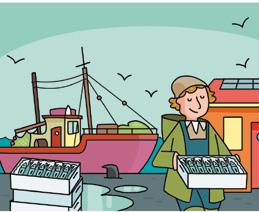




1 Cross the natural product out.
2 Look, listen and read.
Factories
Making manufactured products
Many people work with big machines in large buildings.


Workshops

Artisans work with simple machines or their hands in small buildings.


54
2
t
HINK
3 Who manufactures products? Tick .
2 1 4 5 6 3
1 2 3
4 Circle natural products and manufactured produtcs.

d ELICI ou S JAM!
1 Do you like jam? Order the steps of the recipe.

Pour the mixture into a jar.
Boil the fruit with sugar.
Wash, peel and chop the fruit.
2 Create a recipe. Give it a name and include the ingredients.


3 What ingredients have you got on your list?
I have got strawberries.

I have got peaches.
Go to anayaeducacion.es to learn how we make olive oil.
ChECK WhAt You LEArnEd
NOW I KNOW…
We can manufacture products in factories and workshops.

55
flngredient∫ 1 2 3 4 Your turn!
Who hELpS You In Your dAILY LIFE?
1 Who teaches you at school? Draw.
Providing services
Education
They teach us. For example, teachers.

Transport
They take people or things from one place to another. For example, lorry drivers.

Health
They cure us. For example, doctors.

Trade
They buy and sell products. For example, shop assistants.

56
3
Providing services t HINK 2 Look,
and
listen
read.
3 Colour the service.
4 Where do you go…? Match.
… to learn? … to visit the doctor? … to buy clothes? 1


2
Go to anayaeducacion.es and learn about media. 3 2 1



5 These jobs provide services. What job is there in each picture? What job isn't there in each picture? Tell your classmate.

1 2

There is a teacher. There isn’t a police officer.

ChECK WhAt You LEArnEd
NOW I KNOW…
57
Some jobs provide services.
MY ViSUAL SUMMARY
WhAt JoB do You LIKE?

obtain natural products
manufacture products in


Jobs
farming
livestock

farming
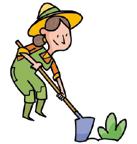
Workshops
Artisans work with simple machines or their hands in small buildings.
Factories
fishing

mining

Many people work with big machines in large buildings.

58
Education
provide services

Health

They teach us.

Transport
They cure us.
Trade
They take people or things from one place to another.
They buy and sell products.

59 can...
1 Match.

2 Look, read and write. 3



a) Write 1 for jobs in nature, 2 for jobs in factories or 3 for services.

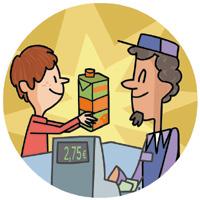
b) Write N for natural product, or M for manufactured product.






60 PORTFOLiO
WhAt do I KnoW? Colour like this: I can do it. I can't do it. I need help.
˙
2
products. I work in
worshop
factory. I provide a service. 6 5 7 8
1 3 4 I obtain natural
a
or
Choose your favourite job and complete a factfile.

1 All jobs are important. Read the questions and consider all factors.

What jobs are there?
What do people do in these jobs? All jobs are important.
2 What is your favourite job? Complete the factfile.

My favourite job
fl want to be a .
1 Circle how you act in these situations.

2 Do you like silence in class? Colour.

61
LEt’S rEFLECt tAKE ACtIon
1 2
I LOVE ANIMALS
I love marine animals. We must help!

WHAT do You tHInK?
What marine animals
do you know?
what Is goIng on around you?

Some actions can damage marine life.
WHAT cAn you do To HElp?
Make a mural on ways to protect marine animals. tAKE ACtIon



68
5 14
what do you nEed To knoW To TAkE aCTIon?
WHAT Is A VIng tHIng?
WHAT do You Know ABout MaMMAlS? 2 Mammals


do You Know WHAT A BIrd Is?


WHAT do You Know ABout repTIlEs? 4 Reptiles
WHAT do AMpHIBIans Look LIKe?


WHAT do Y Know ABout FISH? Fish

Let’s starT! sIng The song
WHAT Is An erTEBrate IMAl?
69
Invertebrate
7
animals
There are many living things 1
Birds 3
Amphibians 5
There are many living things
WhAt IS A LIVIng thIng?


t
1 2 3 4
2 Look, listen and read. Living things eat, react and reproduce. Non-living things don’t.


Classification
Their skeleton
Vertebrates have got a skeleton with a backbone.


Invertebrates haven’t got a skeleton or a backbone.

How they are born
Viviparous come from their mum’s tummy.

What they eat
Oviparous come from eggs their mum lays.
Carnivores feed on other animals.


Herbivores feed on plants.

Omnivores feed on plants and animals.

70
1
1 Cross the non-living thing out. HINK
Go to ‘I’ll tell you in a moment’ and ‘What types of living things are there?’ at anayaeducacion.es.
3 What do living things do? Match.
They eat. They react. They reproduce.
4 Tick the boxes to complete the table.
giraffe pig bird frog

Herbivore
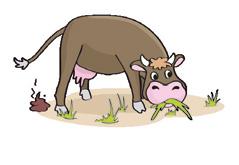
Carnivore
Omnivore

Oviparous


Viviparous
Go to ‘Observe with magnifying glass and binoculars to respect’ and ‘ Necessary villains’ at anayaeducacion.es.

5 Draw your bedroom and include a vertebrate animal. Where is it?


Where is the rabbit? It’s next to the door.
Living things eat, react and reproduce.
NOW I KNOW… ChECK WhAt You LEArnEd
71
1 2 3
Mammals
WhAt do You KnoW ABout MAMMALS?
t HINK
1 Can you name three mammals? Write them down. , and



2 Look, listen and read.
Mammals
Mammals are vertebrates. Baby mammals feed on milk from their mother.

Most of them are viviparous, have got fur and four limbs.
3 Write down the names of these mammals.
This is a monkey. It has got fur and four limbs.
NOW I KNOW…
Mammals are vertebrates.

72 2
WhAt
ChECK
You LEArnEd
fur limb
4 Choose a mammal you like. Cut out some pictures to make a poster and tell your classmates about it. monkey human whale bear 1 2 3
3 do You KnoW WhAt A BIrd IS?
Birds t HINK
1 Circle the birds.
2 Look, listen and read.
Birds are vertebrates. Most birds can fly.



They are oviparous and have got feathers, a beak, two wings and two legs


Birds
beak
Your turn!
wing
3 Look at the parrot and name its body parts

Number three is the beak.
legs
feathers 1 3 4 2
h A nd S on FEA th E rS
1 Do you know what a feather looks like? Look for a real one and stick it on a cardboard.
2 What’s the name of the bird? Write it next to the feather.
NOW I KNOW…
Most birds can fly.
73
ChECK WhAt You LEArnEd 1 3 2 4
Reptiles
WhAt do You KnoW ABout rEptILES?
t
1 Cross the odd one out. 3 2 1
2 Look, listen and read.
Reptiles
Reptiles are vertebrates and oviparous





Skin Limbs
Some reptiles have got scales.
Others have got a shell.
Some reptiles have got legs.
Others haven’t got legs.
3 Look at the pictures and the words from the box. What body parts have these animals got? ChECK
shell scales legs
1 2
It has got scales.
NOW I KNOW…
Reptiles are oviparous and vertebrates.




74 4
WhAt You LEArnEd
HINK
tortoise crocodile lizard snake
Amphibians
WhAt do AMphIBIAnS LooK LIKE?
t HINK
1 Order the words to form a sentence.
Amphibians oviparous. are

2 Look, listen and read.
Amphibians are vertebrates with a very thin and moist skin.





Most of them have got four legs
Most of them are oviparous and lay eggs in water.
Computational thinking
F rog S gro W up
1 Put the stages in order.
Amphibians
Baby amphibians are tadpoles. They live in water.


3 Read the questions and answer them with a classmate.
a) Are amphibians vertebrates?
c) Are dogs amphibians?
No, they aren’t.
Yes, they are.
b) Are toads amphibians?
d) Are frogs viviparous?
NOW I KNOW…
Amphibians have got a thin and moist skin.
75
4
ChECK WhAt You LEArnEd 5
toad newt
frog
eggs tadpole tadpole with legs frog
WhAt do You KnoW ABout FISh?
1 Not all animals that live in water are fish. Circle the fish.

3 4 2 1
2 Look, listen and read.
Fish are vertebrates and live in water








They are oviparous.
They have got scales and fins.
3 Put the stickers.
4 Draw a fish. How many fins has it got?
It has got 3 fins.
fin scales
ChECK
WhAt You LEArnEd
Fish live in water. NOW I KNOW…
76
6
Fish
t HINK
anchovy cod trout
Fish tuna
anchovy trout tuna cod
Invertebrate animals




WhAt IS An InVErtEBrAtE AnIMAL?


t HINK 1 Match.
1
2 Look, listen and read.
invertebrate
vertebrate
Invertebrate animals haven’t got a skeleton.
Other characteristics
Legs and wings
Soft body and tentacles
A segmented body
fly worm jellyfish
A hard body
A shell Form of a star
crab snail starfish

3 Colour the invertebrates.
crab snail


dog jellyfish

4 Is it a vertebrate or an invertebrate?



It’s an invertebrate.
1
tuna fly
2
ChECK WhAt You LEArnEd
NOW I KNOW…
Invertebrates haven’t got a skeleton.
3
77
2
4
7
MY VISUAL SUMMARY
I LoVE AnIMALS

animals
Living things can be...
plants


Animals can be...

Vertebrates


They have got a skeleton with a backbone.
Invertebrates

They haven’t got a skeleton or a backbone.
Carnivores
They feed on animals.
Herbivores
They feed on plants.
Omnivores
They feed on animals and plants.
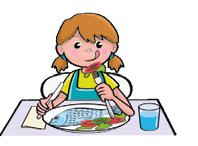
Viviparous






They are born from their mum’s tummy.
Oviparous
They come from eggs their mum lays.
78
The groups of animals are...
Mammals
Most are viviparous. Baby mammals feed on milk from their mother.

Vertebrates
Birds
Oviparous. Have got a beak, feathers and two legs. Most birds fly.

Reptiles
Oviparous. Have got scales.
Amphibians


Oviparous. Have got a thin and moist skin.

Fish

Oviparous. Have got scales and fins. Live in water.
Invertebrates
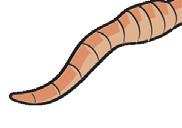



A shell

Segmented body
Soft body and tentacles
Form of a star
Legs and wings

79
WhAt do I KnoW?
1 Put the stickers.
2
the names of two invertebrates you know. and
3 Match.
2
vertebrate
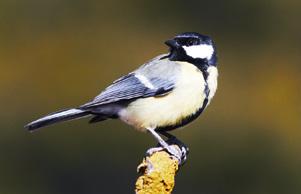


invertebrate

4 Complete the photo album for this unit at anayaeducacion.es.

80
Write
PORTFOLIO
Colour like this: I can’t do it. I can do it. I need help.
4 3 1
mammal amphibian bird fish reptile
tAKE ACtIon
Make a mural on ways to protect marine animals.



1 What marine animals do you know? Brainstorm some ideas with a classmate.
2 We should protect marine animals. Choose one of these endangered marine animals. Cut out pictures of it and make a mural with ideas to protect it.




LEt’S rEFLECt
1 Colour the target. Join the dots and share your result.


Learning about living things is fun.
Learning about living things is useful.
Learning about living things is easy.
I learn about living things alone.
81
1. Agree
1 1 1 1 2 2 2 2 3 3 3 3
2. Partly agree 3. Disagree
1 2 3
©
All rights reserved. No part of this publication may be reproduced, stored in a retrieval system, or transmitted, in any form or by any means, electronic, mechanical, photocopying, recording, or otherwise, without the prior permission of the publishers.
GRUPO ANAYA, S.A., 2023 - C/ Valentín Beato, 21 - 28037 Madrid.



































































































































































































































































































































































